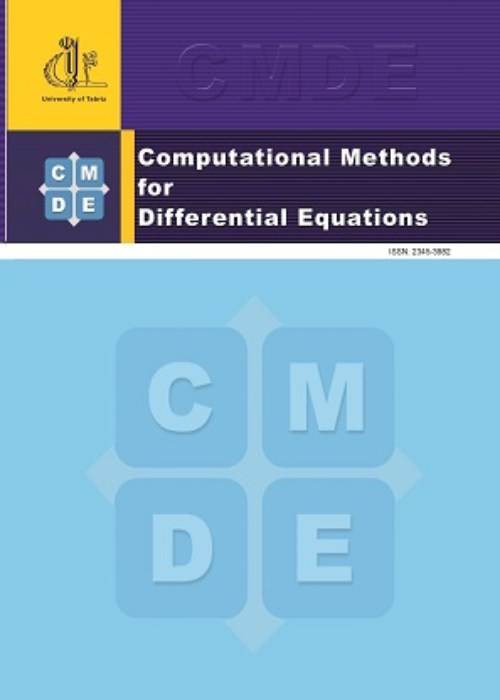فهرست مطالب
Computational Methods for Differential Equations
Volume:4 Issue: 2, Spring 2016
- تاریخ انتشار: 1395/01/13
- تعداد عناوین: 6
-
-
Pages 99-115In this paper, a new numerical method for solving fractional optimal control problems (FOCPs) is presented. The fractional derivative in the dynamic system is described in the Caputo sense. The method is based upon biorthogonal cubic Hermite spline multiwavelets approximations. The properties of biorthogonal multiwavelets are first given. The operational matrix of fractional Riemann-Lioville integration and multiplication are then utilized to reduce the given optimization problem to the system of algebraic equations. In order to save memory requirement and computational time, a threshold procedure is applied to obtain algebraic equations. Illustrative examples are provided to confirm the applicability of the new method.Keywords: Caputo fractional derivative, Fractional order optimal control, Biorthogonal cubic Hermite spline multiwavelets
-
Pages 116-127In this work the mathematical model of a spatial pattern in chemical and biological systems is investigated numerically. The proposed model considered as a nonlinear reaction-diffusion equation. A computational approach based on finite difference and RBF-collocation methods is conducted to solve the equation with respect to the appropriate initial and boundary conditions. The ability and robustness of the numerical approach is investigated using two test problems.Keywords: Reaction-diffusion, ecological systems, RBF collocation
-
Pages 128-138
In this paper, we develop multi-step methods to solve a class of two-dimensional nonlinear Volterra integral equations (2D-NVIEs) of the first kind. Here, we convert a 2D-NVIE of the first kind to a one-dimensional linear VIE of the first kind and then we solve the resulted equation numerically by multi-step methods. We also verify convergence and error analysis of the method. At the end, we give some illustrative examples to show the efficiency and accuracy of the presented method.
Keywords: Two-dimensional nonlinear Volterra integral equations, Integral equations of the first kind, Multi-step methods -
Pages 139-150The current paper proposes a technique for the numerical solution of linear control systems.The method is based on Galerkin method, which uses the interpolating scaling functions. For a highly accurate connection between functions and their derivatives, an operational matrix for the derivatives is established to reduce the problem to a set of algebraic equations. Several test problems are given, and the numerical results are reported to show the accuracy and efficiency of this method.Keywords: Linear control systems, Galerkin method, Interpolating scaling functions, Operational matrix
-
Pages 151-161In this paper, we introduce fractional order of a planar fractional prey-predator system with a nonmonotonic functional response and anti-predator behaviour such that the adult preys can attack vulnerable predators. We analyze the existence and stability of all possible equilibria. Numerical simulations reveal that anti-predator behaviour not only makes the coexistence of the prey and predator populations less likely, but also damps the predator-prey oscillations. Therefore, antipredator behaviour helps the prey population to resist predator aggression.Keywords: Bifurcation, Fractional Prey-predator model, Stability of equilibrium, Dynamical behavior, Limit cycle
-
Pages 162-169The main purpose of this paper is to propose a new numerical method for solving the optimal control problems based on state parameterization. Here, the boundary conditions and the performance index are first converted into an algebraic equation or in other words into an optimization problem. In this case, state variables will be approximated by a new hybrid technique based on new second kind Chebyshev Wavelet.Keywords: Second Kind Chebyshev Wavelet, Optimal Control Problems, Numerical analysis


